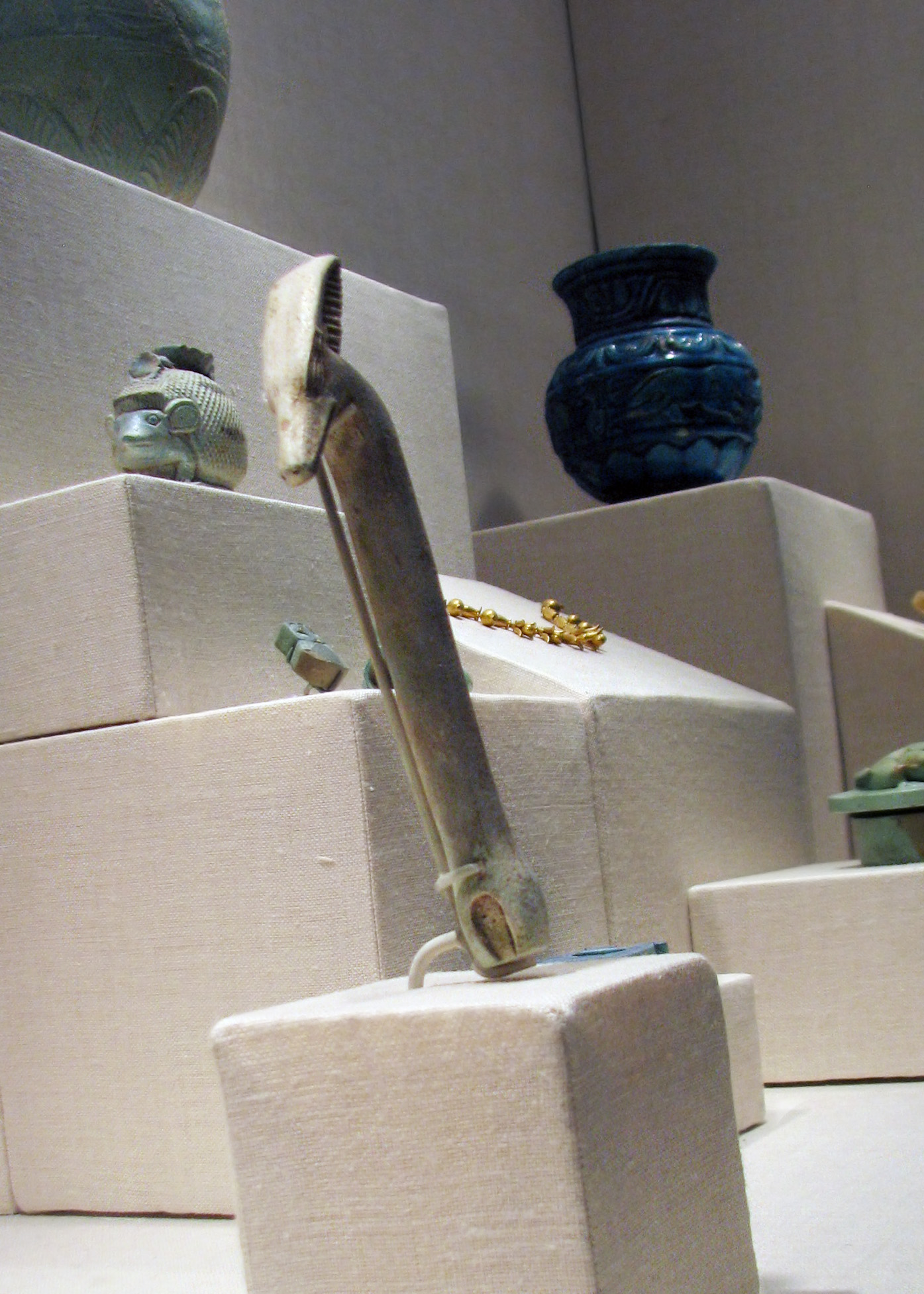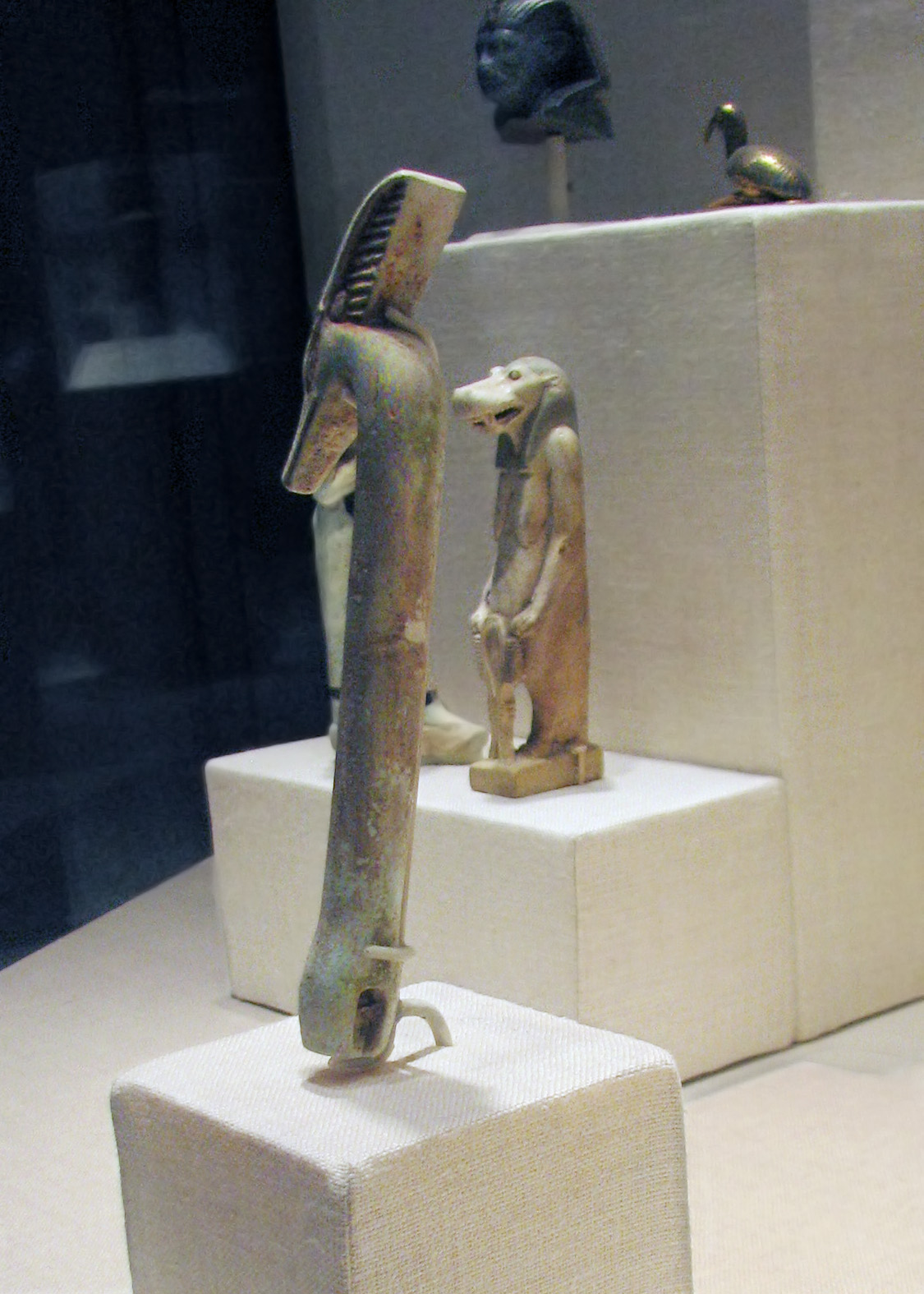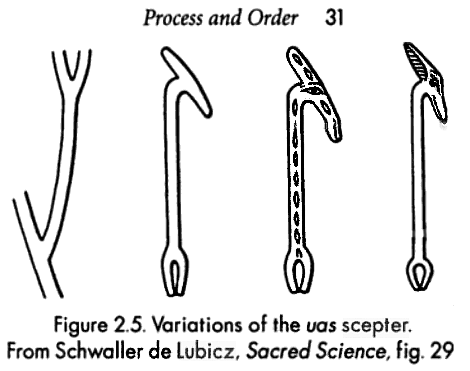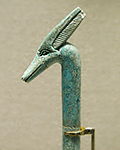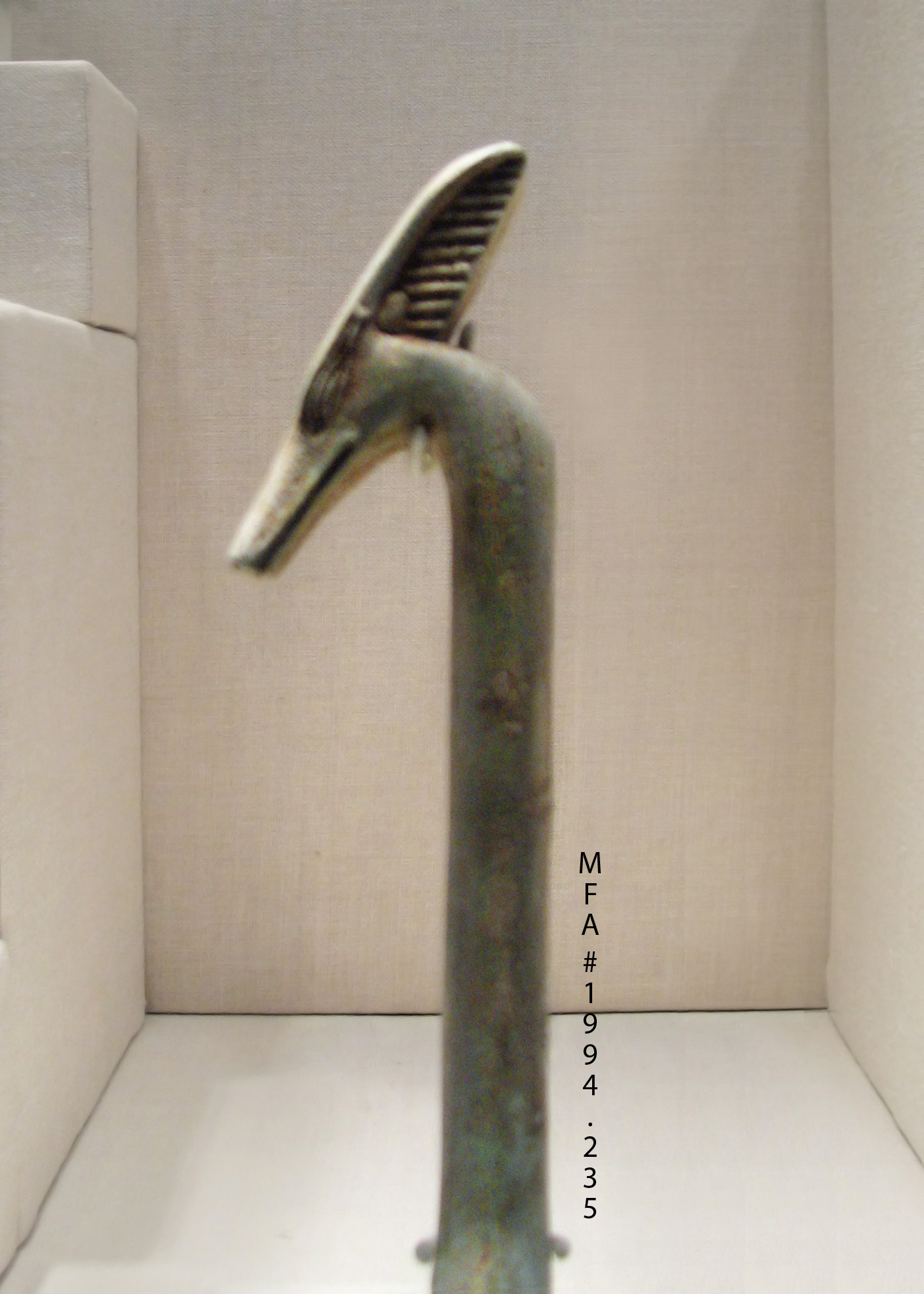
Amulet of a Was Scepter
Egyptian Late Period, Dynasties 26-30, 664-343 B.C.E.
Faience, H x W:16 x 4.5 cm (6 5/16 x 1 3/4 in.)
Marilyn M. Simpson Fund 1994, MFA #1994.235
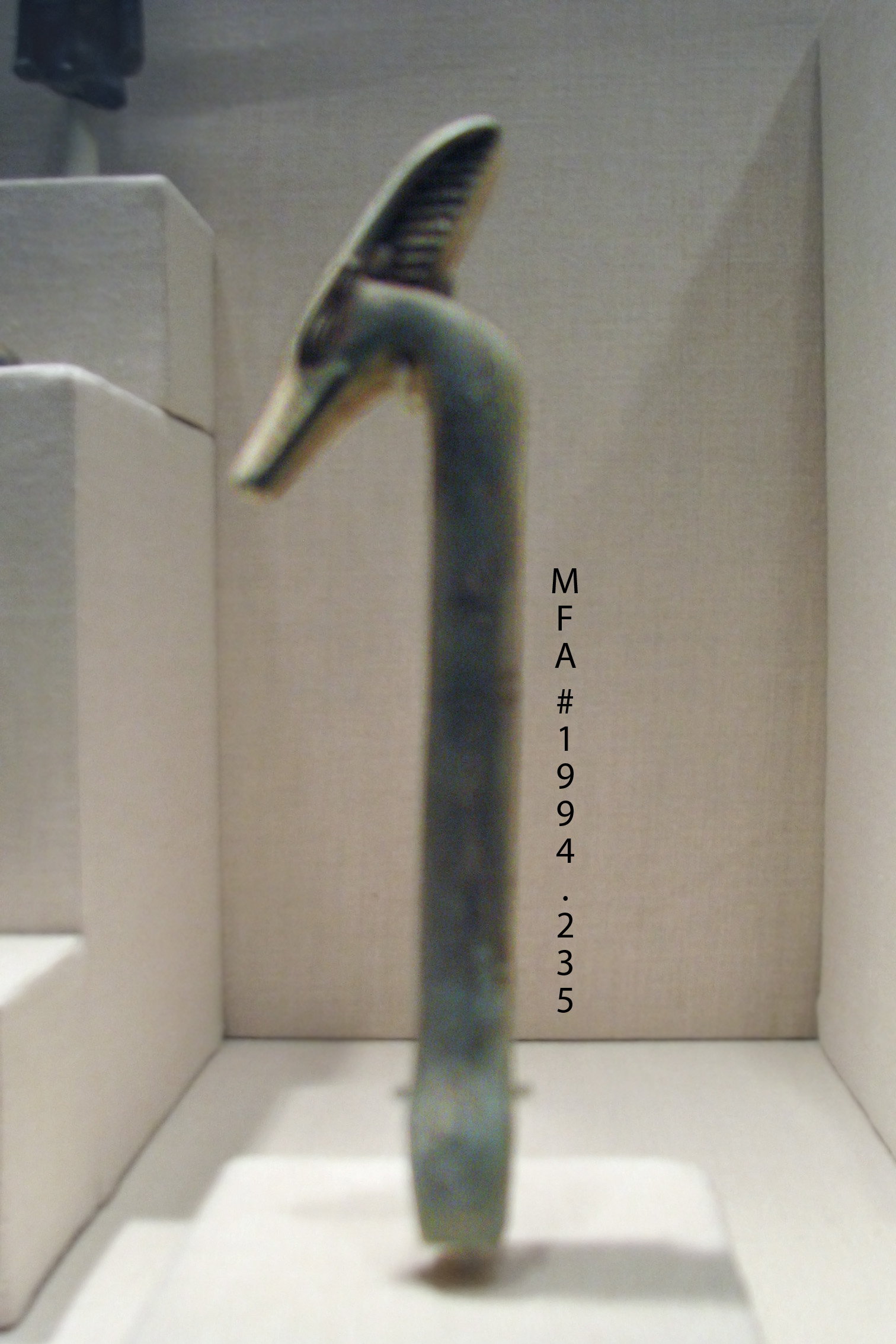
Rather fuzzy photo, but we can see how the bottom was made. Unlike the Met's reconstruction of a beautifully headed Was, the fork end is turned, as it is in
the Brooklyn Museum's complete example:
